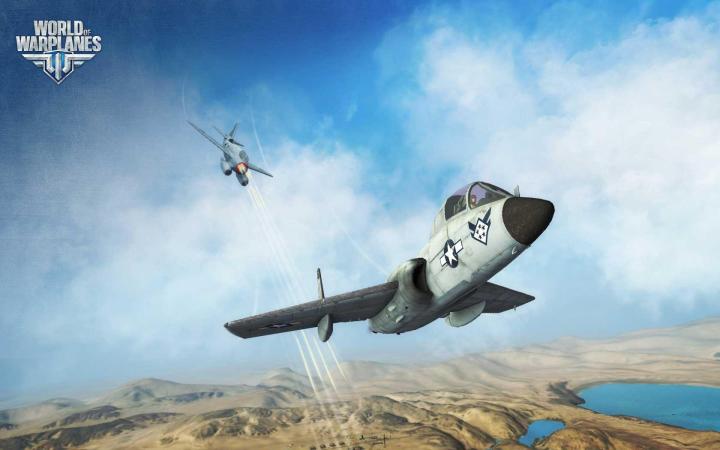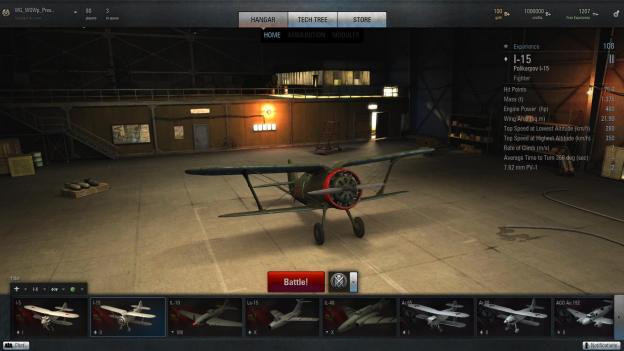
One consistent (and often unfair) argument against free-to-play games is that they lack depth. You are given a simple objective – usually something along the lines of see the enemy, kill the enemy – and then you repeat. You typically spend time leveling up and collecting new items, but there is rarely anything like a story to immerse yourself in. Wargaming’s follow-up to World of Tanks, the upcoming World of Warplanes, does not offer a story. But it does offer a journey.

The game is more than just a flight combat sim; it is a tour through the history of aviation. Specifically the so-called “golden age of dogfighting.” The aircraft you pilot cover a stretch of time between the last bi-planes of the 1930s through the first jets introduced during the Korean War at the beginning of the 1950s.
“The specific tactics that you have to adopt to be successful in these airplanes are also derived from real life,” Vlad Belozerov, director of global operations for World of Warplanes, told Digital Trends. That’s not just an idle comment; your choice of plane influences the way you fly, in turn requiring you to learn the tricks of the era.
Before advances in aviation changed the way aerial wars are waged, victory was a matter of finding the right balance. Sure, you wanted the best plane available – a crop duster would leak oil in terror at the mere thought of being chased by a P-51 Mustang – but you needed a multi-role complement of fighters in order to win skirmishes. That remains true on World of Warplanes‘ digital front.
“It’s like rock, paper, scissors,” Belozerov said. “You have to combine different types of planes in a flying formation, for example, to be successful.”

“Everything is obviously based on historical data.”
“Everything is obviously based on historical data. We have lots of historical consultants who are working on the project,” Belozerov said.
There will be over 100 planes at launch, with more planned for release after that. Once you get into the modifications, that number explodes. Each plane can be upgraded, from the weapons to the engines to the aesthetics. When you first start, you are in tier 1 (the lowest of 10 levels) and have to work your way up. The tier system serves as a tutorial to start with, later opening up into the expected progression system. As you advance, each new tier serves to give you a quick tour through the history of aviation.

Aviation technology changed both rapidly and often in the 20 year period between the 1930s and 1950s. During World War I, airplanes were mainly support vehicles, best used for scouting. Bombing runs required pilots to physically throw the explosives out of their cockpits, and while there were no real anti-aircraft weapons, the relatively slow speeds made these aircraft targets for anyone with a rifle and good aim. By the end of the war, however, it was obvious to most military minds that aerial combat was the future.
“Our goal is to educate that to the players.”
“Our aircraft are based either on planes that were mass produced and are well known, or some prototypes that were probably done as one example or something like that,” Belozerov told us. “Some were done just on paper, but we don’t have any imaginary planes that we invented.”

World of Warplanes takes you through the steps separating these events, starting you with lowly bi-planes, then introducing you to faster racing-era planes. From there you are given the chance to try out the early WWII planes and you can watch as the technology that created the famous Messerschmitt is surpassed by the Corsair, and eventually jets.
“As you progress through tiers, up to tier 10 … more and more you will have to know about tactics to the dogfight. Our goal is to educate that to the players,” Belozerov told us.
To succeed in World of Warplanes, you need to learn about the history of the planes and the tactics those planes used in real life. Understanding that your fighter is more responsive at higher altitudes than your opponent’s, or recognizing the difference in maneuverability between planes makes a huge difference.
Mastering the game is meant to be difficult, but there’s a gradual progression. Like most games of this sort, the bar for experience required to level up and jump into new tiers is set low at first, and then becomes increasingly higher. It will take weeks or months of consistent play to reach the top rankings. By the time you reach the tenth tier, you will have experienced a significant chunk of aviation’s formative years.
“As you move to tier 10, it will become more and more about understanding tactics, about finesse. It will be much more demanding,” Belozerov said, adding, “But players will become much more skillful [along the way], so it is a journey.”


